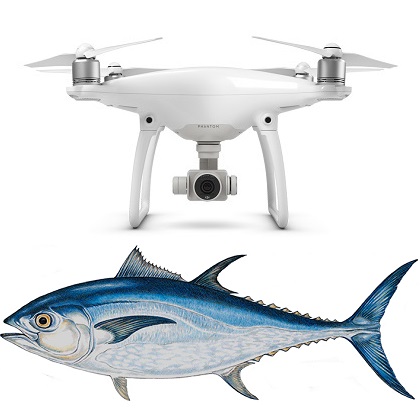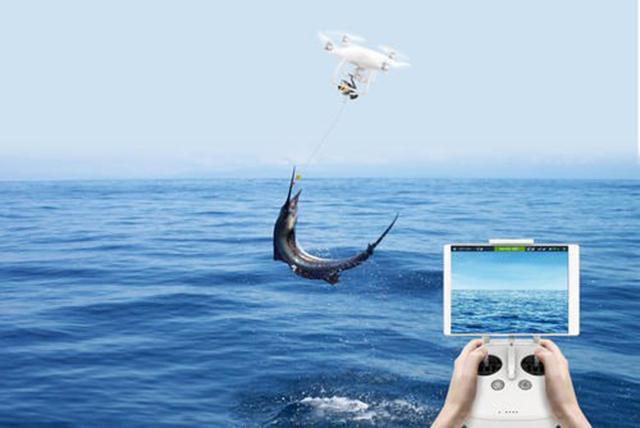
This article will cover the basics of a drone fishing device. We will also discuss what to look out for when selecting your drone, battery life and payload. Next, we will discuss how to get the best drone. For more tips and tricks, read on. You will soon be able to fly the drone of your dreams. Let's get !... going and maybe even catch a few more fish!
Basic drone fishing equipment
When you are ready to start drone fishing, the first thing you need is a good set of hooks. You should double the fishing line and use mono or braid. To attach a Cat's Paw Loop or Uni Knot to the line, you should tie it. You'll also need a sinker between 2-8 ounces and hooks for attaching to each second section of your backbone. You will also need to attach the end loop and snap swivel lead loops to your drone.
There are many ways to create a fishing drone. One basic method involves attaching a hook on the drone's landing gear and spinning the line until it releases. Droppers and drop lines can be used to keep the fishing net below the drone. Droppers are a way to keep the main line from getting caught up in propellers. Accessories such as docks and batteries can be added to fishing drones.
Once you've purchased the basic drone fishing rig, you'll need to purchase some additional equipment. You will need a long fishing line (about 700 meters), as well as a bait-dropping device. These are optional extras but will make your drone fishing trip more enjoyable. A good drone will give you a clearer view of your surroundings, and you'll be able to spot fish more easily.

Payload on drone fishing rig
If you're planning on catching a fish using a drone, you need to be aware of the safety measures that need to be taken. It is not a good idea to fly your drone in heavy winds or rain. These are some tips to help you get started:
Firstly, make sure that your drone has a solid carrying capacity. The drone will not stay stable if it is loaded with heavy lures or braided lines. If you are fishing near the seaside, wind can blow the drone off course. It is also important that you check your local laws and regulations, as some may not allow the use of drones for fishing. After you have decided to go fishing with your drone, it is important to make sure that the drone has enough carrying capacity.
Next, determine the accessories that you'll need for your drone. A good rule of thumb is to use a rigging system that has a central attachment point to reduce weight distribution problems. The most suitable attachment points are the motor struts, landing gear, and legs of the drone. Avoid attaching payloads to your camera or gimbal, as they can be damaged. You can tie a fishing line running from one end of the camera to the opposite. Tape can be used to keep it from falling apart.
Battery life for drone fishing gear
Make sure you check your batteries before you go fishing with your drone. This will ensure that your drone doesn't run out of battery and allow you to concentrate on fishing rather than recharging. You may be able to charge your drones using solar panels or batteries from your car. Start out by having fully charged batteries. This will ensure that your drone can fly immediately after you arrive at your fishing spot.

It is also important to take into account the drone’s flight time. While some drones can fly longer than others, the average drone can fly for around twenty-two mins. This is great if the drone can fly for hours on the water. Be aware, however, that a drone with limited endurance may not be able to fly and make it virtually impossible to catch fish.
Once you have set up your fishing rig, attach your fishing line clip to the legs of the drone, or to the motor struts. Attach the bait to the fishing rod. Before you start to fly the drone, lock the reel and then unlock it when you are ready to drop the bait. Once you release the line, tension will build and the drone will drop the bait in the water. If the battery is not charged properly after each use, it will not function properly.
FAQ
What are the laws around flying drones?
The Federal Aviation Administration (FAA), oversees all aspects of drone operation in the United States. A certificate issued by the FAA is required to commercially operate a drone. Then, you must complete a course in piloting skills and pass an exam. Final, you will need to pay a fee.
Can I fly my drone indoors?
Yes, it is possible to fly your drone indoors. There are only a few things you need to do: Make sure your home is free of obstacles and hazards. You should not fly near windows, doors or heating vents.
What law applies to drones that fly over private property?
The FAA has recently issued new rules for commercial drone flights. These rules apply to UAVs with a weight less than 55lbs and that fly at a height of below 400 feet from the ground. Commercial operators will need to register with FAA and get a license from agency. They must also obtain permission from local authorities if they plan to operate in restricted areas, such as airports.
How do I keep drones away from my house?
Drones are increasingly popular for home surveillance. However, they pose a threat to privacy and security. To avoid drone attacks, install motion sensors around the property. They will detect any unapproved flying objects.
What type of batteries should a drone be using?
The majority of drones use lithium-ion cells. A drone typically uses between 3 to 6 volts.
Statistics
- According to industry research from ZipRecruiter , there are 10 cities where the typical salary for a Drone Pilot job is above the national average. (dronesgator.com)
- Research and Markets predict a growth rate of 51.1% over the next five years. (thedroneu.com)
- According to Indeed, a drone pilot gets paid $25.73 per hour on average in the US. (dronesgator.com)
External Links
How To
How to Fly Drones at a Beginning Level
A drone is a remotely-controlled aircraft that is used for aerial photography and surveillance. The technology behind drones has been around since World War II. DJI introduced their Phantom series of quadcopters in 2010, but commercial use only began in 2010. There have been many drones made since then. These range from beginner-friendly drones like Parrot AR Drone 2.0 to more advanced multi-rotor craft like DJI Mavic Pro.
There are several ways to fly a drone, including;
-
Remote control - This allows you to control the drone from your hand. There are two main types: Joysticks (like a radio), and On/Off switches (like an alarm clock).
-
Manual Control - Using a smartphone app, this method allows users to remotely operate the drone via GPS coordinates. Follow the instructions of the app to track the exact location you want the drone go.
-
Autonomous Flight - This method involves leaving the piloting duties to the drone itself. The drone is able to fly autonomously, without the need for human intervention. A drone must have a builtin camera and sensors capable to capture images and other data.
-
Triggered Flight – This method is very similar to manual flight. The pilot creates a route that the drone will follow until it reaches the destination. Once the programmed route is completed, the drone lands automatically and returns back to the base.
-
Landing Gear- Some drones include landing gear that allows for safe landing if the power goes out or they run out of batteries.
-
Goggles-Some pilots use goggles to protect their eyes from debris during operations.
-
Camera - Certain drones come with cameras that allow you to take photos and videos from high above.
-
Obstacles. Some drones can have obstacle avoidance technology that stops them from hitting obstacles.
-
Speed - Some drones can reach speeds of over 40 mph.
-
Battery Life: Most drones have a battery life of between 20 and 30 minutes depending on how many power sources you use.
-
Range - Some drones can travel upto 30 miles depending on their models.
-
Power source - Not all drones can use an external power source. Others can run on internal batteries.
-
Weight - Some drones are lighter than others, while some models can weigh as much as 4 pounds.
-
Size - Drones come in many sizes, from small gadgets that fit in one's hands to large craft that weigh more than 50 lbs.
-
Price – All drones fall into a price category. These range from expensive models that cost thousands to affordable options that start at 100 dollars.